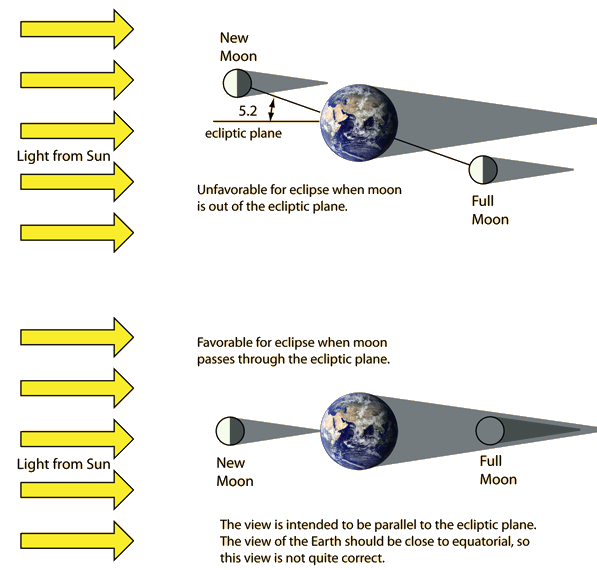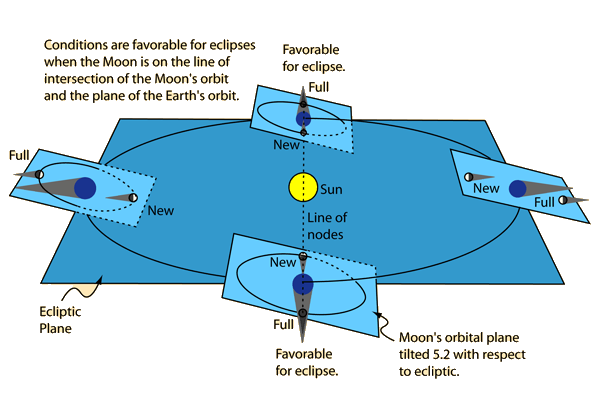WHY ARE ECLIPSES RARE EVENTS
During a lunar month of about 29.5 days, the moon goes through a set of phases from new moon to crescent to half moon to gibbous to full moon and back again to new moon. We know that a new moon occurs when the moon comes between the sun and the earth and the full moon occurs when the earth comes between the sun and the moon. In that case, you might wonder why we do not get a solar eclipse every new moon and a lunar eclipse every full moon. Wouldn’t it be fun to have a solar eclipse every month!
The orbit of the Moon around the Earth is inclined to the orbit of the Earth around the Sun, and hence these orbits are not in the same plane. This inclination angle is about 5 degrees. This means that during most new moons or full moons, the three bodies are not in an exact straight line. During most new moons, the moon passes a few degrees to either side of the sun on the sky and during most full moons, the shadow of the earth passes a few degrees to either side of the moon. It is only when all three bodies fall in an exact straight line does an eclipse happen.

Another way to think about this is to imagine the planes of the orbit of the earth around the sun and the orbit of the moon around the earth. Since these two planes are inclined at about 5 degrees to each other, they will intersect along a line which cuts the two orbits at two points. These two points are called the ascending and descending nodes. Seen from the earth, these two nodes are opposite each other in the sky and mark the positions where the two orbits meet. It is only when the moon and the sun reach the same node at the same time do we have a solar eclipse and it is only when the moon and the sun reach opposite nodes at the same time do we have a lunar eclipse. During a new moon, the sun and the moon are very close to one of these nodes, but not coincident. From this discussion, if one concludes that when there is no eclipse, the new moon cannot be 100 % new or that the full moon cannot be 100% full, you would be right indeed!


